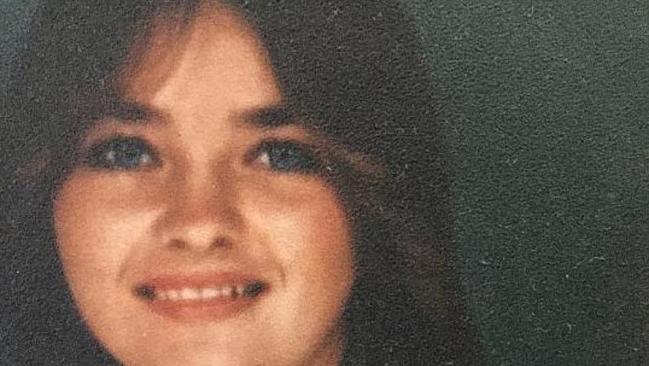Investigators hope DNA samples used to reconstruct face of suspect will help solve a 30-year-old case
DARLENE Krashoc’s murder almost 30 years ago was a cold case but investigators may have found a way to catch her killer.

ALMOST 30 years ago to the day, Darlene Krashoc was murdered before her body was dumped behind a Korean restaurant in Colorado Springs.
The 20-year-old soldier was bitten, beaten and sexually assaulted before being strangled to death with a coat hanger and leather straps. The autopsy suggested she may have also been thrown from a moving car.
Despite hundreds of interviews and the investigation being reopened in 2004 and 2011, the grisly St Patrick’s Day murder has remained unsolved.
According to available DNA evidence taken from the scene and re-examined years later, the suspect was only ever able to be profiled as an unidentified male.
But now frustrated investigators believe they may have a new chance to catch the killer. They say a technology-first is being used to decode DNA and reconstruct the face of a man suspected of being involved in Ms Krashoc’s death.
In December last year, the Army’s Criminal Investigation Command sought the services of Parabon NanoLabs to help solve the mystery using phenotyping — the process of predicting physical appearance and ancestry based on unidentified DNA evidence.
This means investigators have been able to create a potential composite of the suspect based on predictors of his hair, eye colour and even face shape.
While the profile could spark the memory of potential witnesses, it is not without its downsides.
“It is important to note that the composites are scientific approximations of appearance based on DNA, and are not likely to be exact replicas of appearance,” Criminal Investigation Command wrote in a news release.

“Environmental factors such as smoking, drinking, diet, and other non-environmental factors — e.g., facial hair, hairstyle, scars, etc. — cannot be predicted by DNA analysis.”
Army spokesman Christopher Grey said investigators made a strategic decision to couple the composite image with a $A13,000 reward around the anniversary of the murder, with hopes of guilting the killer or potential information sources to come forward.
“We are always looking for someone who is remorseful or has held onto information for all this time,” he said, according to Stars and Stripes.
“We want to bring justice to this young lady who lost her life.”
On the night Ms Krashoc disappeared, she had been drinking and dancing with fellow soldiers, before leaving the nightclub at between midnight and 1am. Her body was discovered by Colorado Springs police just four hours later.
At the time of her death, family members gave a chilling account saying Ms Krashoc told her mother Betty she was upset and wanted to flee the Army a week before she was killed.
Unfortunately, the soldier never told her mother the reason behind her fear.
A 1996 report on the cold case, published in the The Gazette, said in 1996, “a killer who bit his victims was arrested on the east coast and detectives sent plaster casts of the bite marks on Krashoc” but there was no match.
Almost a decade after her death, Darlene’s parents made another attempt to reignite the investigation, handing out fliers with a picture of their daughter and a plea for help:
“I was only 20 years old. They took my dignity, my pride and my jacket. Then, without mercy, they took my life. If you know something and think it’s insignificant, you’re mistaken. It’s probably the missing link.”
Mr Grey added investigators have no indication of whether the suspect was a soldier or civilian, but hopes the composite will help solve the case.
Continue the conversation in the comments below or with Matthew Dunn on Facebook and Twitter.



